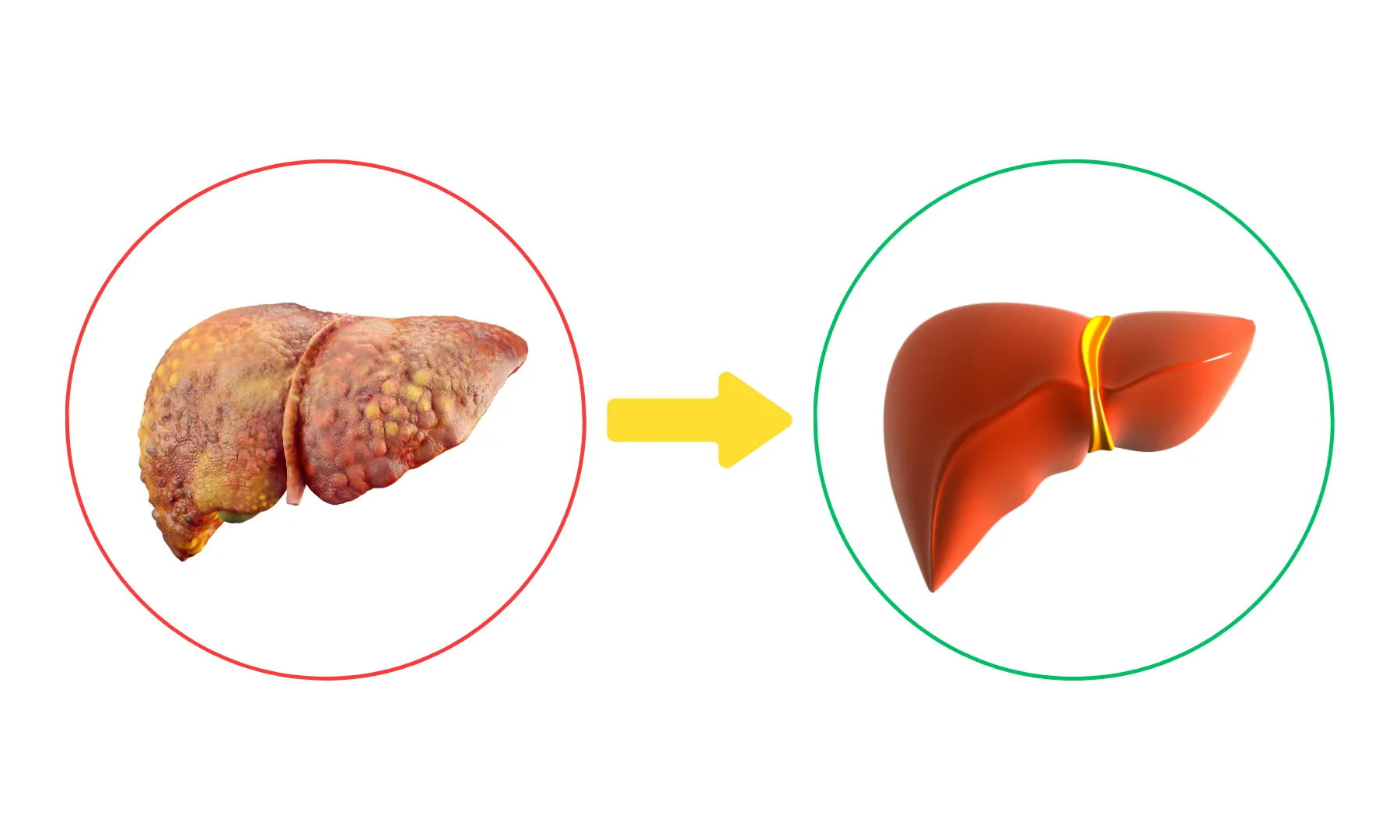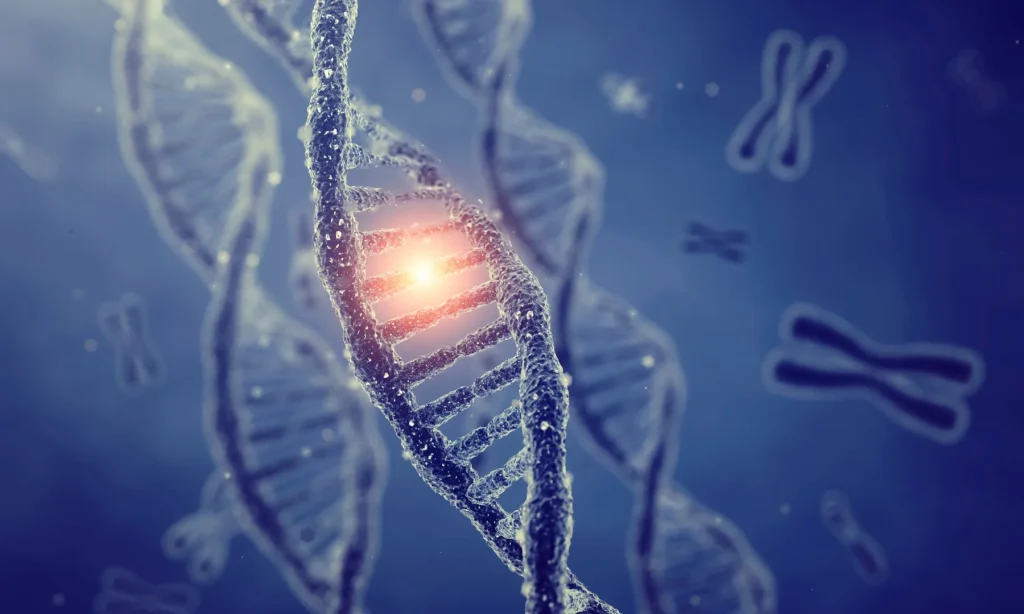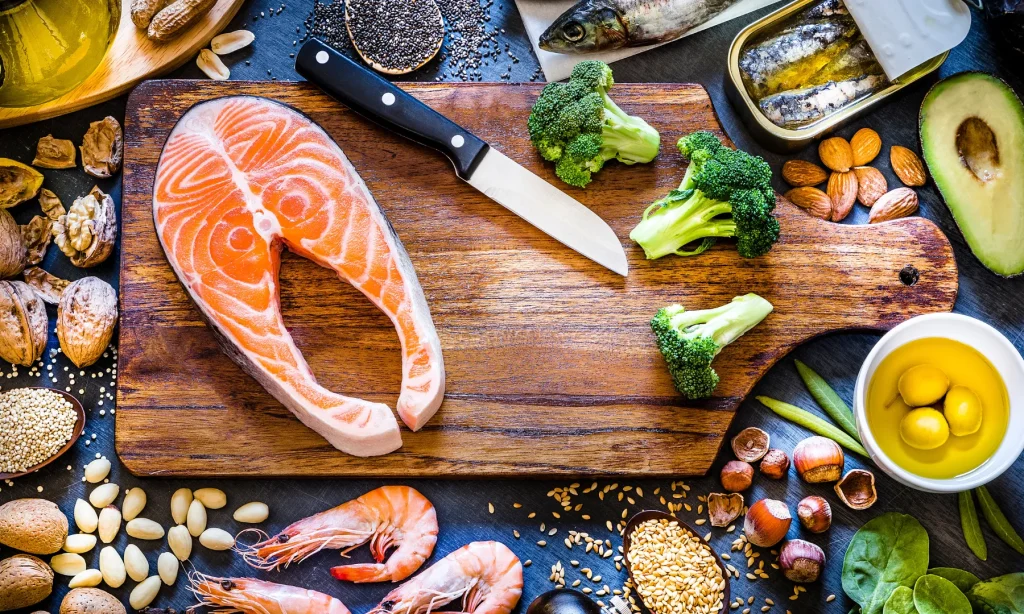
When liver enzymes refuse to normalize and every lifestyle tweak seems to fall flat, it’s time to look beneath the surface and into the patient’s genetic blueprint. Hidden within that data are powerful clues about why some individuals accumulate fat in the liver or struggle with stubborn metabolic dysfunctions despite doing “everything right.”
Nutrigenomics bridges that gap between genetic insight and targeted nutrition, turning static DNA information into dynamic, clinical applications. For practitioners, it’s not just about identifying hepatic risk variants; it’s about translating them into actionable protocols that can transform both fatty liver outcomes and cardiovascular health trajectories.
In this guide, we’ll explore how to interpret and leverage key hepatic genes, integrate genotype-driven nutrition into functional medicine practice, build strategies that enhance metabolic resilience, and arm you with actionable, personalized protocols to finally move the needle on NAFLD, cardiovascular health, and metabolic dysfunction.
Let’s roll up our sleeves and decode how you, yes, you, can turn gene insights into real, lasting change. Ready to stop guessing and start precision-treating? Read on…
Key Takeaways
Nutrigenomics empowers practitioners to address fatty liver disease by aligning dietary and supplement interventions with each patient’s unique genetic profile.
Testing for key hepatic genes like PNPLA3, TM6SF2, and MBOAT7 is crucial for understanding individual risk and optimizing functional medicine protocols for fatty liver.
Personalized plans that leverage choline, betaine, and omega-3 fatty acids help reverse NAFLD and improve metabolic resilience in genetically at-risk individuals.
Gene-guided carbohydrate management and lifestyle tweaks, such as time-restricted eating, drive better liver health outcomes than one-size-fits-all advice.
Combining regular lab assessments with nutrigenomic data allows functional medicine practitioners to track progress and adapt interventions effectively.
Table of Contents
Understanding Gene-Based Metabolic Resilience
What keeps one patient’s liver humming along happily while another is slogging through steatosis? Welcome to the fascinating concept of metabolic resilience, the body’s built-in ability to weather dietary storms, refresh stressors, and keep blood chemistry in check even in the face of modern metabolic mayhem.
It turns out, your genetic script plays a starring role in this resilience. The right, or wrong, combination of hepatic metabolism genomics shapes how efficiently you clear triglycerides, burn fat, and quell inflammation. Genes aren’t destiny, but they’re definitely road signs: markers like PNPLA3, TM6SF2, and MBOAT7 tip the scale for who gets NAFLD and who walks free after a summer of BBQs.
Here’s the kicker: with targeted nutrition and lifestyle moves, you can actually stack the odds in your patient’s favor, reprogramming their metabolic resilience score. Functional medicine and nutrigenomics together mean you’re no longer fumbling in the dark. Instead, you’re treating root causes, not signs, and shaping condition risk from the inside out.
And yes, this approach isn’t just about avoiding fatty liver. It’s about building robust cardiovascular health and laying the groundwork for decades of wellness. That’s the kind of legacy your practice can be proud of.

Hepatic Genetic Risk Factors
PNPLA3, TM6SF2, and MBOAT7 Mechanisms
Let’s get cozy with three heavy hitters in the world of NAFLD and metabolic dysfunction: PNPLA3, TM6SF2, and MBOAT7. If you’re not testing for these variants, you’re essentially playing darts blindfolded.
PNPLA3 (I148M variant): Think of this one as the gene that forgets how to take out the liver’s lipid trash. It impairs triglyceride breakdown, so fat piles up fast. Fun (or not-so-fun) fact: patients with this variant often have high ALT, more steatosis, even if their BMI is nothing to write home about.
TM6SF2 (E167K variant): This gene messes with VLDL secretion. While it can mean lower LDL out in circulation (good on paper), inside the liver, it’s a traffic jam of fat. TM6SF2’s signature? Fatty livers hiding behind deceptively normal lipids.
MBOAT7: This variant likes to throw gasoline on the fire, amping up inflammation and fibrosis. It meddles with phospholipid remodeling, setting the stage for chronic liver drama.
Gene–Nutrient Interactions Overview
Here’s where it gets juicy: these genes don’t work in a vacuum. Nutrients, such as choline, betaine, and omega-3 fatty acids, are levers that turn genes up or down. For a PNPLA3 carrier, choline isn’t just good advice: it’s mission-critical for exporting all that stuck-together fat. TM6SF2’s mess can be soothed by activating PPAR-α pathways (hello, omega-3s). MBOAT7 carriers? They’ll thank you for extra polyphenols and omega-3, tuning down hepatic inflammation.
What’s wild is how different patients with the same recognition respond based on these risk factors. The precision game: test, match nutrients to genotype, watch the magic happen. NAFLD nutrigenomic protocol in action, and one size never fits all.
Nutritional & Lifestyle Interventions
The everyday blueprint for tackling fatty liver isn’t a mystery, but making it stick is. From Mediterranean patterns to personalized carbohydrate loads, here’s how practitioners transform genetic insights into real-world wins.
Choline and Betaine Supplementation by Genotype
Choline is way more than just an egg yolk molecule; it’s the unsung hero for PNPLA3 carriers (and honestly, for anyone fighting hepatic fat). Call it the liver’s Uber for getting rid of pesky triglycerides. Eggs, salmon, soy lecithin: pile them on, especially if the gene test says so. Typical guidance? Start at 500–1000 mg daily, but high-risk types might need to double that (1,000–2,000 mg, often as choline bitartrate). Don’t forget betaine, another methyl donor that helps keep homocysteine at bay and encourages fat clearance.
Omega-3 Fatty Acids and Hepatic Oxidation
Here’s a clinical fave: omega-3 fatty acids. EPA and DHA (found in fatty fish like salmon, mackerel, sardines) are the peacekeepers. They fire up PPAR-α, driving mitochondrial fat burn and cooling inflammation. For your TM6SF2 and MBOAT7 folks, 2–4 g a day of fish oil can make hepatic triglycerides drop by up to a third. Patients often love the simplicity, “Add more fish twice a week”, but you can supplement if needed (watch sourcing and purity). Pro tip: Pair omega-3s with vitamin E (around 400 IU/day) for even more antioxidant muscle.
Managing Fructose and Carbohydrate Tolerance
Here’s something that feels like common sense but smacks you with how gene-sensitive it is: not all livers like fructose. PNPLA3 types are terrible at handling sugary “extras”, so wave goodbye to sodas, sweet teas, and orange juice floods. Use CGM tech for real-time learning. And don’t be shy about berberine, chromium, or alpha-lipoic acid for their insulin-grace and metabolic-smoothing effects. It’s not just dogma; science shows these tweaks matter more when the blueprint (their genotype) says so.
There’s absolute freedom in telling patients their carbs are not the enemy, but a dial to be tuned, one that’s different for each genetic hand dealt.
Functional-Lab Correlation
ALT, Triglycerides, and Imaging with Genetic Markers
Labs and genes go hand-in-hand, think Batman and Robin, except with more blood draws and liver ultrasounds. Start with your basics: get a handle on ALT, AST, triglycerides, and toss in GGT and homocysteine for good measure. What you see on the surface (like normal serum triglycerides) can betray you, especially with sneaky TM6SF2 variants. That’s why genetic context matters.
Stack your labs against genetic results. For example, is ALT stubbornly high in a lean person? Worth checking PNPLA3. Are triglycerides paradoxically low, but imaging shows a lot of fat? TM6SF2 could be the culprit. FibroScan or MRI-PDFF gives real-deal quantitative info on fat fraction, no more clinical guesswork.
And don’t go it alone: functional medicine shines by combining phenotype (what you can see and measure) with genotype (what’s written in their code), so your interventions get sharper and stickier over time. Plus, it’s oddly satisfying to finally crack cases that used to be labeled as “tough nuts.”

Case Study: PNPLA3 Carrier Intervention Plan
Time for some boots-on-the-ground action, a real-world story that brings this all together. Meet Mark, a 42-year-old guy with a BMI of 27, slightly jacked-up ALT, and, you guessed it, a homozygous PNPLA3 I148M variant (yep, two copies of the “sticky fat” gene).
Here’s how his plan played out:
Diet: Mediterranean-style, loaded with choline-rich foods (think eggs for breakfast, salmon at lunch, a little soy on the side). Carbs kept below 30% total calories, nothing too draconian, just common sense swaps.
Omega-3s: Consistent servings of fatty fish (at least 2–3x a week) plus 3g daily EPA/DHA supplementation. Oh, and 400 IU of vitamin E tagging along for the ride.
Supplements: Bumped up choline (1,500mg/day, as bitartrate) and betaine (3g/day), helpful for methylation and chucking out extra liver fat.
Lifestyle: Mark tackled time-restricted eating (14 hours fasting, 10 hours eating) and added resistance and aerobic exercise 4 days a week. Basically, saying yes to after-dinner walks and his old dumbbells.
Results in 12 Weeks:
Hepatic fat fraction dove by 28%.
ALT normalized.
And Mark? He said his energy was finally climbing, less fog, more life.
Don’t underestimate the power of a tailored plan. Sometimes, what feels like splitting hairs (genotyping, personalized nutrition) is the difference between months of frustration and a real, sustainable turnaround.
Practitioner Checklist & Follow-Up Metrics
Need a quick-hit checklist for making all this actionable in your clinic? Stick this on your wall (or, let’s be honest, your favorite browser tab):
Assessment Domain | Baseline | Re-test | Goal |
|---|---|---|---|
ALT / AST | ✓ | 12 wks | ↓ 30% |
Triglycerides | ✓ | 12 wks | ↓ 20% |
Omega-3 index | ✓ | 8 wks | >8% |
Body composition | ✓ | 12 wks | ↓ visceral fat |
Genetic expression mod. | ✓ | 6 mos | ↓ PNPLA3 activity |
Follow-Up Rhythm:
Months 0–3: All-in intervention (nutrition, exercise, labs, support)
Months 3–6: Maintenance mode plus periodic labs
Months 6–12: Revisit genomics yearly, genes don’t change, but how they’re expressed sure does.
Pro Tip: Pair labs with honest conversations. Ask about sleep, stress, and what patients are actually eating, not just what they wrote down for you. Sometimes, a little humor or a personal story helps you both see progress where the numbers lag behind.
Learn Metabolic Genomics with Elite Gene Labs
Feeling up to translate gene data into measurable clinical outcomes? Elite Gene Labs helps practitioners move beyond theory, turning genetic reports into actionable, precision-based nutrition and lifestyle protocols that actually change liver and metabolic outcomes.
Inside the Integrative Genomics Specialist Program, you’ll find:
A complete nutrigenomic panel tailored for real-world patient care
Supplement and nutrient frameworks built for genotype-specific liver and cardiovascular optimization
Clinical tracking tools to monitor hepatic resilience and metabolic response
An engaged practitioner network collaborating on real case applications
Advanced education through the Integrative Genomics Program — an accredited, practitioner-focused training designed to help you confidently apply nutrigenomics across functional and integrative medicine settings
If you’re sick of treating everyone’s liver like it’s cut from the same cloth (spoiler: it isn’t), this is where you level up. Because when you understand how genes shape metabolism, and how nutrition can rewrite that script, you’re not just managing liver enzymes, you’re restoring metabolic balance and cardiovascular health from the source.
Here’s to reimagining what’s possible with every test result and every meal plan you create. Because when you blend functional medicine, cutting-edge genetics, and a dash of curiosity, you don’t just change lab numbers. You change lives.
Frequently Asked Questions:
What is nutrigenomics, and how does it help with fatty liver disease?
Nutrigenomics is the study of how nutrition interacts with your genes. When applied to fatty liver disease, it allows practitioners to personalize dietary strategies based on genetic factors, improving liver fat metabolism and reducing liver inflammation more effectively than generic approaches.
Which genetic markers most impact fatty liver risk in functional medicine?
The key hepatic genetic markers impacting fatty liver risk are PNPLA3, TM6SF2, and MBOAT7. These genes influence fat buildup and inflammation in the liver. Identifying these markers helps functional medicine practitioners design targeted nutritional interventions for better clinical outcomes.
How can functional medicine use nutrigenomics to create personalized plans for NAFLD?
Functional medicine practitioners use nutrigenomic testing to identify gene variants like PNPLA3 or TM6SF2, then tailor nutrition such as increasing choline or omega-3 intake, to match each patient’s genotype. Personalized plans lead to improved liver markers and more effective NAFLD management.
What diet and lifestyle strategies work best for people with fatty liver and genetic risk factors?
Strategies include a Mediterranean-style diet rich in choline, omega-3 fatty acids, and polyphenols; reducing processed sugars, especially fructose; and regular physical activity. Supplementation with choline, betaine, and fish oil is often recommended for genetically at-risk individuals.
Can DNA testing help prevent fatty liver progression?
Yes, DNA testing can identify people at higher genetic risk for fatty liver. With this knowledge, early dietary and lifestyle interventions can be implemented, potentially reversing or preventing disease progression by addressing individual metabolic weaknesses.
Are there risks to following a nutrigenomic protocol for fatty liver without medical supervision?
Yes, implementing a nutrigenomic protocol without guidance can lead to unbalanced nutrition or missed underlying conditions. It’s important to consult a qualified practitioner to ensure interventions are safe, effective, and based on comprehensive genetic and clinical assessment.
References:
Huang, Y., He, S., Li, J. Z., Seabloom, D. E., Pajvani, U. B., Min, J., Li, Y., Gong, Y., Kunuthur, S., Jobaliya, C., Hu, H., Gomez, J. A., & Cohen, D. M. (2010). A sequence variation (I148M) in PNPLA3 associated with nonalcoholic fatty liver disease disrupts triglyceride hydrolysis. Journal of Biological Chemistry, 285(9), 6706–6715. https://www.jbc.org/article/S0021-9258(19)37836-6/fulltext
Kawano, Y., Bhavsar, D., & Cohen, J. C. (2021). Effects of TM6SF2 E167K on hepatic lipid and very low-density lipoprotein (VLDL) secretion in humans. JCI Insight, 6(2), e144079. https://insight.jci.org/articles/view/144079
Lu, Y., Wambach, J., Hild, M., McAteer, J. B., & Lotta, L. A. (2022). A metabolic associated fatty liver disease risk variant in MBOAT7 compromises phospholipid remodeling and promotes inflammation in chronic hepatitis B. Nature Communications, 13(1), 7453. https://doi.org/10.1038/s41467-022-35158-9
Caussy, C., Peterson, K., & Traber, P. G. (2023). Choline intake in a large cohort of patients with phenotypic NAFLD and evidence of oral choline supplementation for treatment: A large database study. American Journal of Clinical Nutrition, 117(5), 968–978. https://doi.org/10.1016/j.ajcnut.2023.02.015
Scorle, S., & Byrne, C. D. (2019). Omega-3 fatty acids and nonalcoholic fatty liver disease in adults and children: Where do we stand? Current Opinion in Clinical Nutrition & Metabolic Care, 22(2), 89–95. https://doi.org/10.1097/MCO.0000000000000547
Abidov, M., Ramachandran, C., & Berg, R. (2019). One-carbon metabolism and nonalcoholic fatty liver disease. Liver Research, 3(2), 53–62. https://doi.org/10.1016/j.lri.2019.05.002
Schwimmer, J. B., Ugalde-Nicalo, P., & Zeiger, R. S. (2018). Fructose and sugar: A major mediator of nonalcoholic fatty liver disease. Current Opinion in Clinical Nutrition & Metabolic Care, 21(5), 367–372. https://doi.org/10.1097/MCO.0000000000000480
Meroni, M., Longo, M., & Rustichelli, A. (2023). Nutritional genomics in nonalcoholic fatty liver disease. Biomedicines, 11(2), 319. https://doi.org/10.3390/biomedicines11020319
Cienfuegos, S., Gabel, K., & Kalam, F. (2024). The effects of time-restricted eating for patients with nonalcoholic fatty liver disease: A systematic review and meta-analysis. Clinical Nutrition ESPEN, 59, 1–10. https://doi.org/10.1016/j.clnesp.2023.12.007

